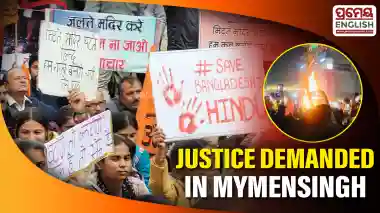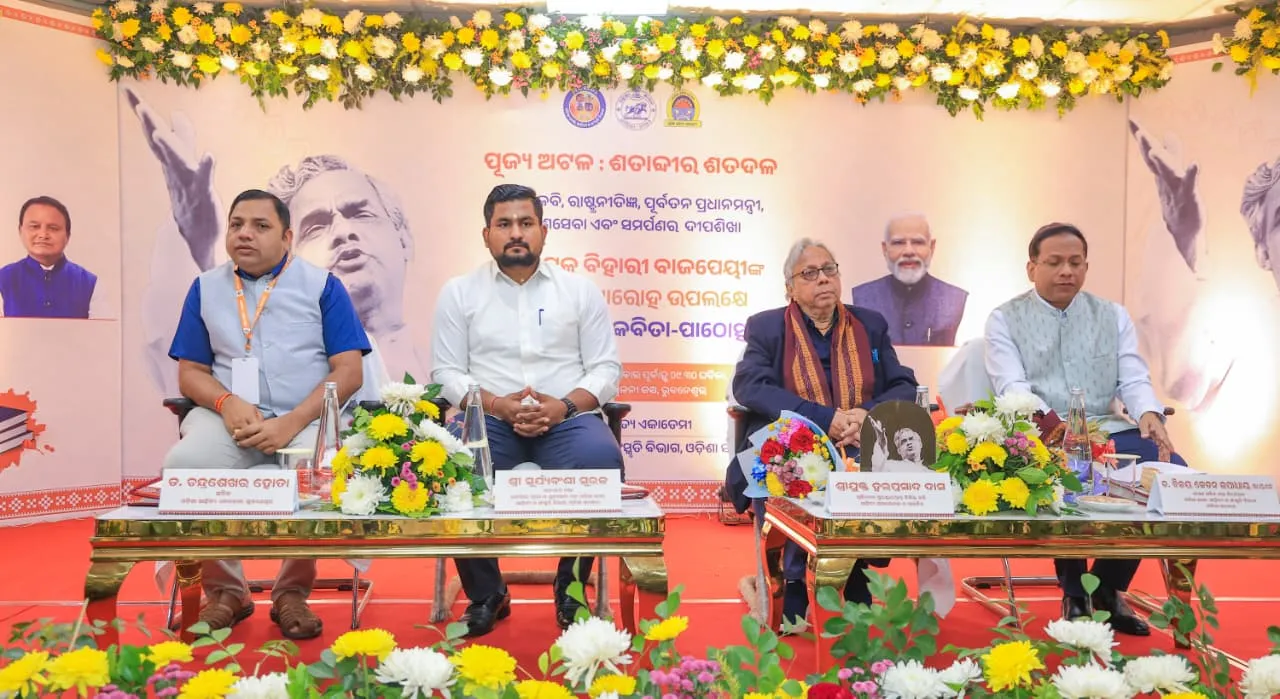

Bhubaneswar, Dec 25: On the occasion of the birth anniversary of Bharat Ratna and former Prime Minister Atal Bihari Vajpayee, a state-level poetry recitation programme titled “Pujya Atal Shatabdir Shatadala” was organised today by the Odisha Sahitya Akademi and Odia Language, Literature and Culture Department.
The programme was held at Sanskruti Bhavan, where more than 100 poets from across the state participated and offered their poetic tributes to the legendary statesman, remembering his life, ideals and literary legacy.
Culture Minister Suryabanshi Suraj graced the occasion as the chief guest. He paid floral tributes to the portrait of Atal Bihari Vajpayee and remembered his immortal legacy.
Addressing the gathering, the Minister said that Atal Bihari Vajpayee was a living embodiment of dedication.
His literary consciousness continues to inspire and delight generations, he said.
The Minister noted that Vajpayee’s poetry and writings reflect deep philosophical thought and courage, making his personality exemplary for all.
“The immortal ideals and values of Atalji remain relevant even today. His thoughts, words and creative expressions reveal a rare blend of sensitivity and fearlessness. His life and vision should inspire the younger generation to contribute towards building a strong and prosperous nation,” Suraj said.
Poets from different districts of Odisha recited poems dedicated to Atal Bihari Vajpayee and offered their tributes in his memory. All participating poets were felicitated by the Odisha Sahitya Akademi.
Haraprasad Das, eminent litterateur, Dr. Bijay Ketan Upadhyaya, Secretary, Odia Language, Literature & Culture Department, Dr. Chandra Sekhar Hota, Secretary, Odisha Sahitya Akademi were present in today's state level poetry recitation programme.